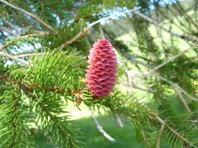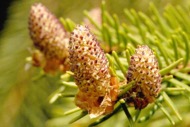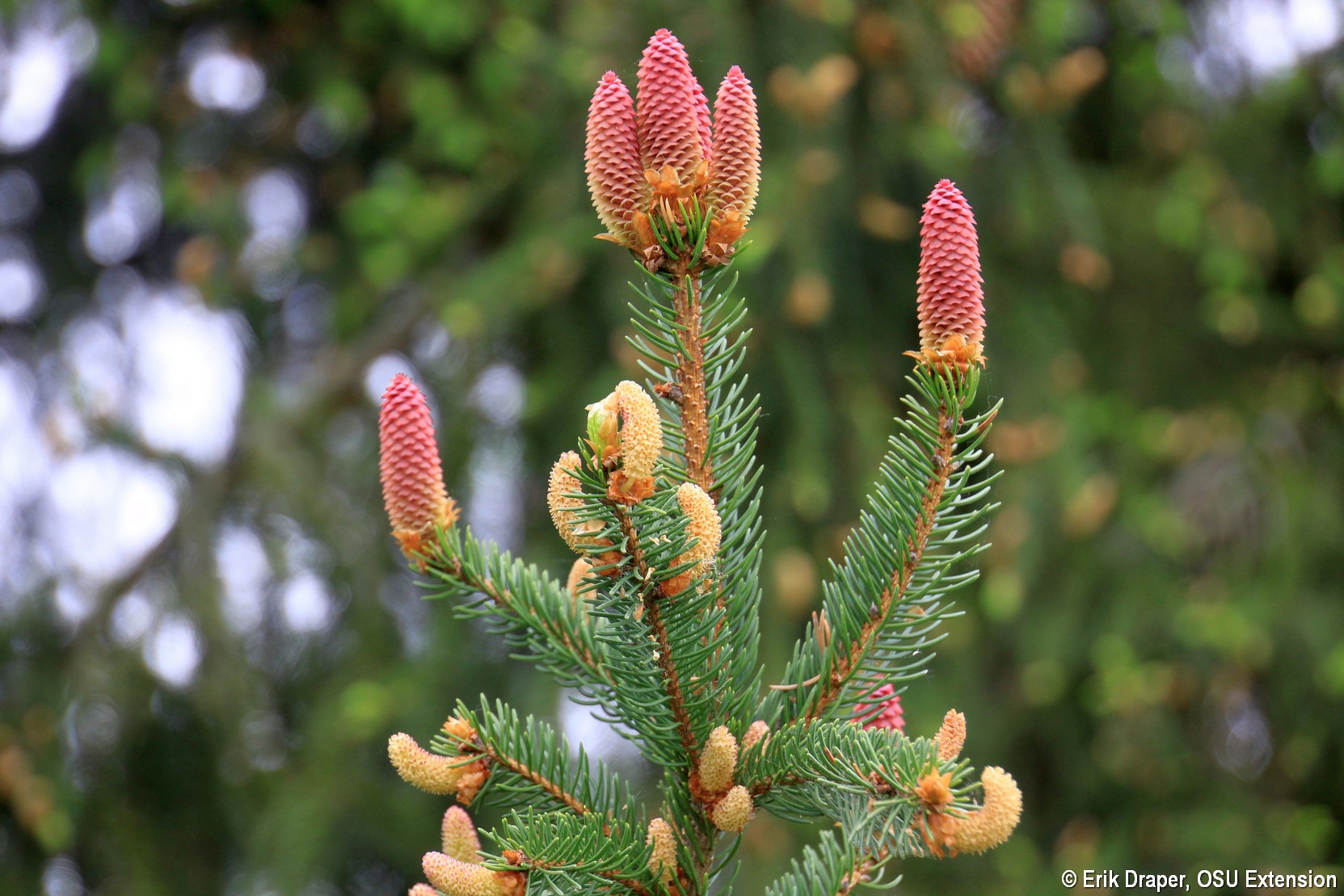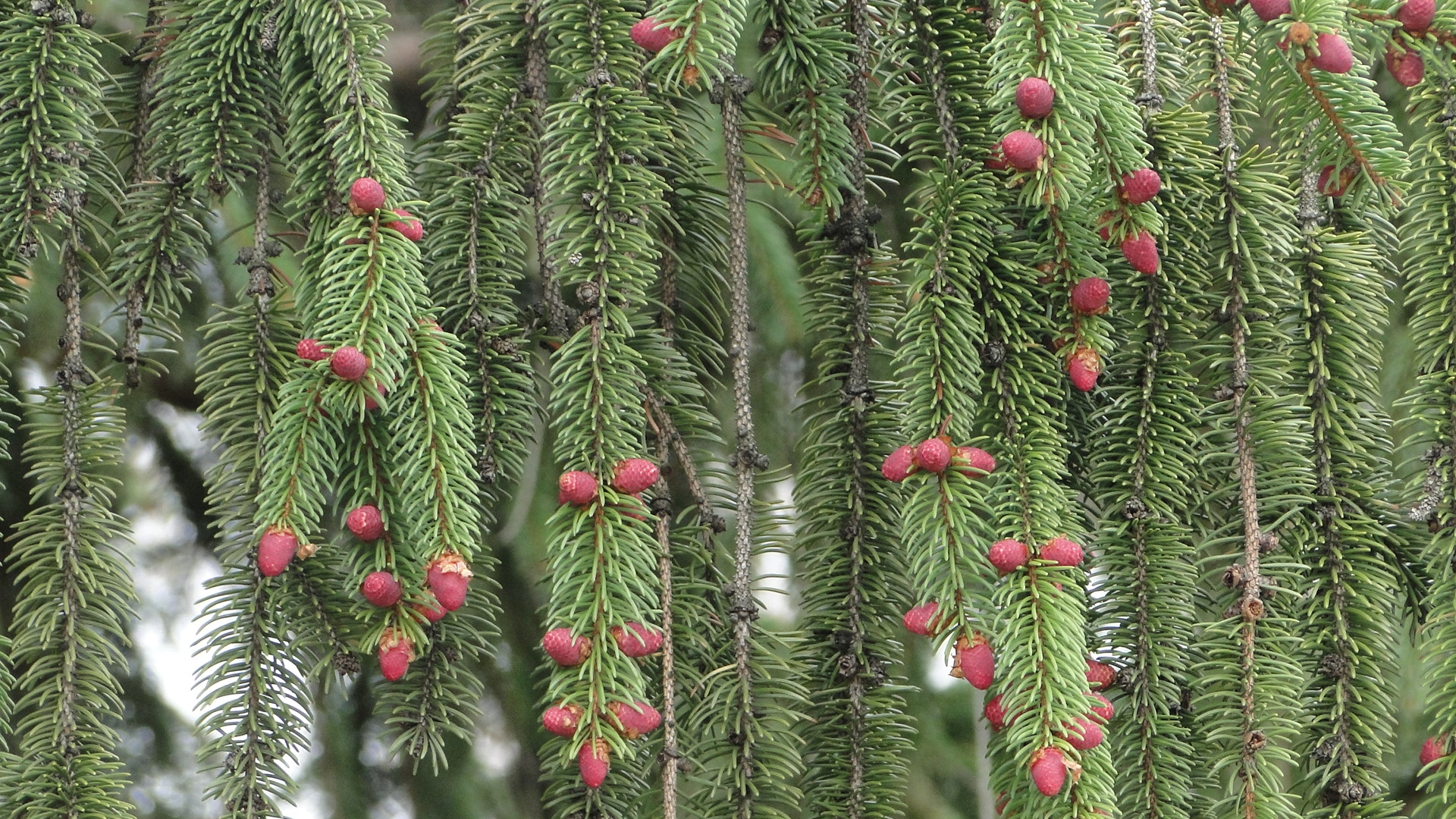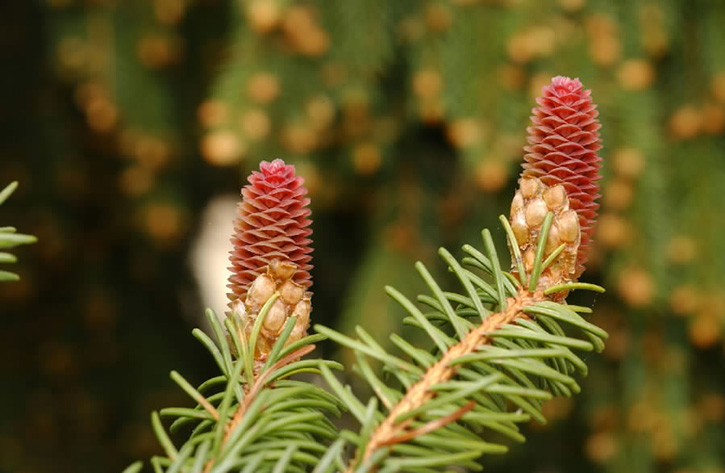Why don’t I see cones on my Norway spruces every year?
A stand of conifers may look like they change little from year to year, but in fact the number of seeds and cones they produce varies widely. Conifers produce cone crops erratically; there will be years of complete cone failure, years of poor to moderate cone production, and, periodically, years in which a staggering number of cones burden the trees – referred to as “mast years”. “Mast” was first used to describe “the fruit of forest-trees (beech, oak, chestnut, pecan, etc.), especially if having fallen from the tree, used as fodder for pigs and other animals”. In modern usage it refers more generally to the edible vegetative or reproductive part produced by woody species of plants, i.e. trees and shrubs, that wildlife species and some domestic animals consume. Mast includes acorns, nuts, berries, drupes, catkins, rose hips and conifer cones.
Yummy!
Bumper mast years produce such an excess of cones that predators can’t possibly consume them all – guaranteeing the tree opportunities for successful seed dispersal, germination, and recruitment. Mast years usually occur in cycles, every two to seven years. Any individual tree which masted in a generally non-mast year would be subjected to the exclusive attention of the seed predators and so would be selected against.
This shows how the numbers of cones vary from year to year (data from NRC website) - mast years are pretty obvious but also note that the number of cones goes down to zero in intervening years.
Why any given year is a mast year is not fully understood, but certainly is affected by year-to-year climate variations. The largest cone crops follow optimal conditions: a cool growing season two years before a cone crop, allowing trees to grow and build reserves; a hot spring in the year preceding a cone crop, stimulating trees to initiate cone development; and cool growing con- ditions the year of a cone crop, enabling maximum development of the cones. The trees’ reserves are exhausted during a masting event, resulting in very few cones the following year.
Not all cones are seed cones. Seed cones are the female fruits of conifer species, and a typical seed cone’s woody scales cover and protect the ripened ovules underneath them. Seeds are impressed against the inner wall of each scale. Though they don’t look the same, the male reproductive organs that provide pollen are also considered to be cones.
Male cones release pollen in the spring, which is transferred from male to female parts by WIND, not by insects, birds, or other pollinators.
Wind pollination: male cones releasing pollen. The pollen grains are so light that they float upwards, which is why the female cones are at the top of the tree.
This is a real picture from the National Parks Department website of clouds of pollen being released by conifers. It looks this way because the pollen grains float upward and create a haze. Pollen release takes place in a restricted time frame over only a few days.
The reproductive cycle for a Norway spruce takes two years. Cone buds are initiated and differentiate in the early summer (Year 1). In the following year (Year 2) the cone buds flush, pollination and fertilization occur and embryo and seed development are completed. Seed fall begins in the autumn and may continue into the spring of a third year.
In spruces seed cones occur towards the top of the crown and pollen cones are concentrated in the mid to lower crown. Both types of cone are borne on 1-year-old shoots. In Norway spruce the female buds appear only in terminal positions and the male buds occur in lateral positions along the length of the shoot.
In Year 1 bud differentiation begins at about the cessation of lateral shoot elongation, towards the end of July. Buds become dormant during November, at which time they contain all their needles and reproductive cells for the next season.
By mid May of Year 2, the cones have flushed and are readily visible on the trees. The pollen cones appear red and as they elongate and as pollen is shed they turn yellow. By mid-May seed cones have opened and they turn to the vertical position and are green, reddish-green or red.
Pollen shedding and pollination occur in late May (of Year 2) and fertilization occurs in late June. By late August the seed cones are green and are now hanging downward on the trees. During September, the drooping seed cones are much more visible because they’ve turned reddish brown in the tops of the trees. Seed shedding begins in late October, and can continue until the spring of Year 3. In Norway spruce, seed shedding occurs by dropping some of the cones, and also by some cones opening while still held on the branches, dispersing the seeds via the wind. This means that in some years there might be mature cones left on the tree even though new cone production is low or non-existent, and in other years there might be mature cones and developing cones on the same tree.
Mature cones and developing cones on the same Norway spruce. The developing female (seed) cones are upright and red-colored, whereas the mature cones that hadn’t fallen off the tree are brown and hanging downward.
Disruption of the reproductive cycle can occur in a couple of ways: Trees may fail to initiate cone buds because they lack the required energy reserves. Frosts in spring can damage emerging cones. Poor weather, particularly rain at the time of pollen shedding, can reduce pollination. Insect damage and premature conelet drop may occur.
But some of our nursery practices may also affect whether cones are produced
Another relevant issue is how the Norway spruce that you buy in a wholesale or retail nursery has been grown. It has likely been sheared, maybe more than once if you’ve bought it as an 8-footer or taller. Shearing is done to create uniformity of shape and to ensure dense branch structure. Shearing differs from pruning in that shearing concentrates on removing only the terminal portion of the new shoots, generally less than half its length. Shearing will not only shorten the annual growth of these shoots, but will also result in more shoots. This will create a more compact plant than one that is not sheared and one with denser foliage – it will look “better” to the buyer. Shearing is generally done just after lateral growth has stopped and hardened off (late summer) – shortly after cone bud differentiation would have started – and since seed cones are in a terminal position on spruce trees, shearing can easily remove nascent seed cone buds.
Also, the tree you buy, if its fairly tall already, is probably in balled and burlapped form, having been field grown and mechanically dug. Since spruces have unusually shallow roots, the process of mechanical digging cuts off a great deal of the tree’s total root mass; spruce tree root mass is more like a pancake than a muffin – the bigger the tree the larger the diameter of the pancake. Mechanical digging creates a root ball with a fixed diameter, meaning that bigger spruce trees end up having the most compromised root masses when they’re dug. The newly-planted tree’s first priority for energy expenditure will be to regenerate its roots. So it is not unusual for spruce trees in the nursery trade not to set cone buds for a number of years after planting.



